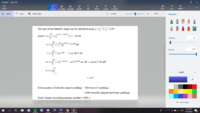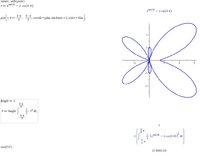A pudding is made in a butterfly shape by generating r=e^cosθ-2cos 4θ about the polar axis and make it 2cm height?
So, to get a butterfly shape, two r is used, r1=e^cosθ-2cos 4θ and r2=-e^cosθ+2cos 4θ,
but i can't seem to integrate this when i reach integrate by theta, am i doing it wrong?
So, to get a butterfly shape, two r is used, r1=e^cosθ-2cos 4θ and r2=-e^cosθ+2cos 4θ,
but i can't seem to integrate this when i reach integrate by theta, am i doing it wrong?




